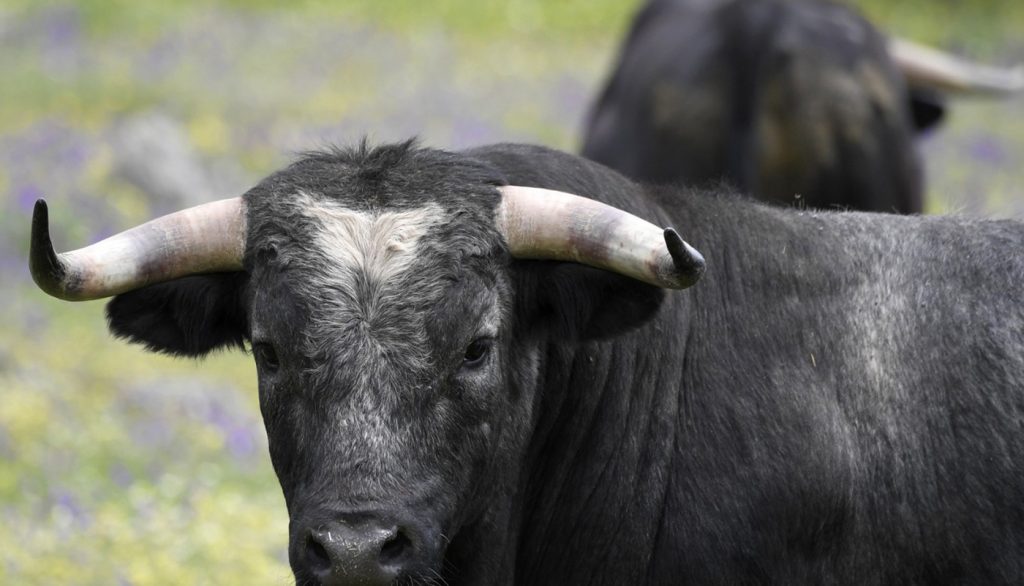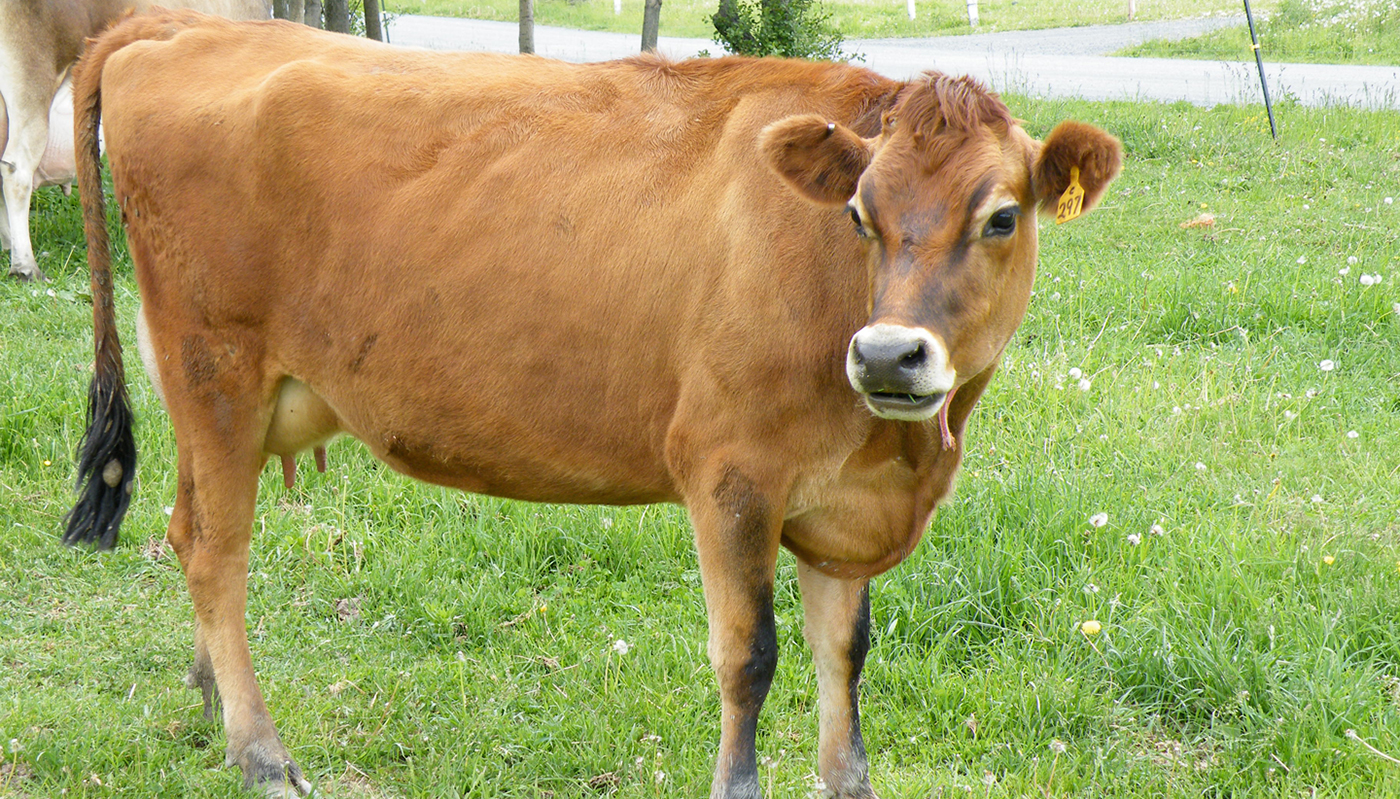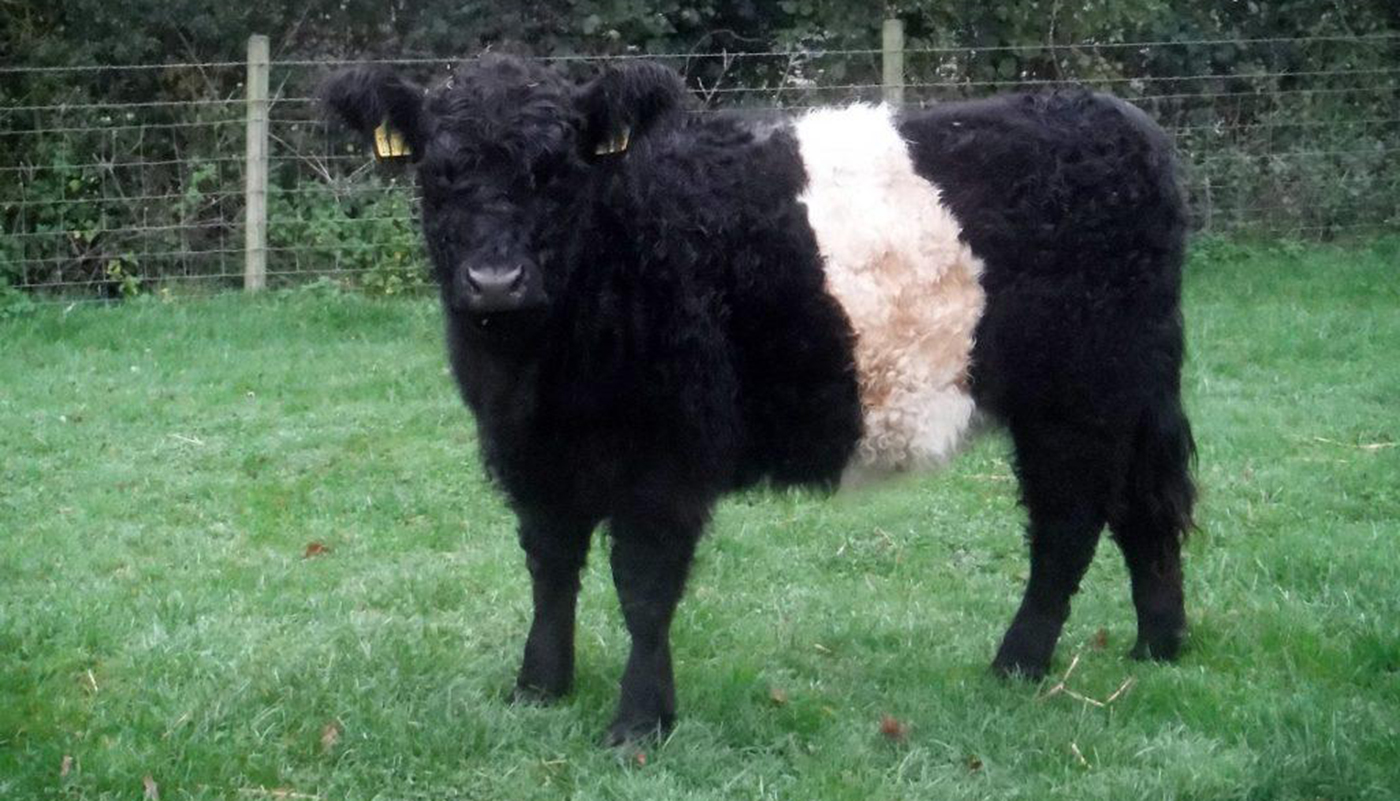
The Spanish Fighting cattle is quite a breath-taking sight to behold when you see them grazing in the lush pastures, they are kept in. They are a medium to somewhat large sized cattle the female having a blockier frame than the more rounded muscular one of the males. Their rich inky black coast shines and glistens in the sunlight as they idly graze.
SPANISH FIGHTING CATTLE BREED OF CATTLE QUICK PROFILE OVERVIEW
|
|
|---|---|
| The Spanish Fighting cattle are usually bred as free-range cattle roaming the hills of various estates in Spain, Portugal and Latin America where bull fighting is organized. | |
| Country of Origin: | Spain |
| Other Names: | Fighting Bull, Toro Bravo, Toro Lidiado, Ganado bravo, Touro de lide |
| Main Purpose: | Bull fighting/sport |
| You may Also Like: | 35 Best Cattle Breeds for Milk – Dairy Cattle |
| You may Also Like: | 47 Best Cattle Breeds for Meat – Beef Cattle |
| Can be used for | Breed, Meat, Sports |
| Ideal Climate: | Heat, Cold, Most Climates |
| Conservation Status: |
Not Listed by the *ALC Status/Rarity: Not at risk |
| Health Issues? | No known health issues |
| Good Starter Cattle? | Novice to intermediate Cattle farmer/keeper level |
| Cattle Associations: | Unclear – Please check with the American Dairy Association, National Association of Animal Breeders, Beef Cattle Breed Associations or The Beef Industry’s Information Center |
| Cattle Clubs: | Unclear – Please check with the American Dairy Association, National Association of Animal Breeders, Beef Cattle Breed Associations or The Beef Industry’s Information Center |
| Where to buy them? | Unclear – Please check with the American Dairy Association, National Association of Animal Breeders, Beef Cattle Breed Associations or The Beef Industry’s Information Center |
| Child Friendly? | Livestock should not be left unattended around unsupervised children |
| General Information: | The Spanish Fighting bull does not mature as fast as normal beef breeds do as it is not bred for its beef but rather for its strength and aggression. They have a well-muscled look with prominent morillo which looks like a large lump between the neck and shoulder blades. This is actually a complex of muscles which gives the bull its strength of horns and its famed recognizable fighting bull profile. Cattle are actually color blind so it is just a myth that bulls go nuts at the color red but rather it is a response to the movements of the muleta that make the bull attack. Testing establishes if the males will be slaughtered, sent to the bull fighting arena or kept for breeding purposes. Testing a bull for the fighting arena is tested with the bull’s aggression towards a horse as the bull is forbidden to charge against a man on the ground before its first arena appearance. The Bull learns to use its horns by fighting with other bulls in the pastures which often occurs in a tragic end for one of the bulls and a great loss to the breeders. The females of the breed are also put to a thorough testing routine. Or rather they are tested even more thoroughly than the male. As it is said that a bull’s courage is inherited from that of his mother! Breeding cows will be kept up until they can no longer bare calves. All bulls entering the bull ring must have full functional horns that have by no means been tampered with. |
| Note: *ALC stands for American Livestock Conservancy | |
PHYSICAL CHARACTERISTICS |
||||||||||||||||||||||||||||||||
|---|---|---|---|---|---|---|---|---|---|---|---|---|---|---|---|---|---|---|---|---|---|---|---|---|---|---|---|---|---|---|---|---|
| It is rather an aggressive cattle breed which is true in both the male and female of the breed. They are a medium sized breed with a well-muscled blocky frame. The females have little to no hump at all on their necks whilst the hump is not very large but still well defined on the neck of the male. The male also has a more rounded well-muscled physique with a thicker neck than the female. | ||||||||||||||||||||||||||||||||
| Size: | Medium | |||||||||||||||||||||||||||||||
|
||||||||||||||||||||||||||||||||
COW BREEDING & MILKING INFORMATION |
|
|---|---|
| Most Cattle produce milk but not all of them are used in the dairy Cattle capacity for their milk. Cows only calve once a year and should have 12 to 14-month inter-calving cycle. They are not a dairy cattle breed and as such, they have small milk yields that are usually just enough to wean her young on. They have good birthing rates with an easy birthing and little no birthing problems. | |
| Breeding Period/cycle: | Usually lasts 6 to 24 hours Most ave. 12 to 16 hours Cows usually come on heat every 21 days. |
| Estrous cycle: | Ave. 17 days to 24 days Heifer – usually ave. 20 days Cows – usually ave. 21 days |
| Gestation Period: | Usually, around 279 to 287 days but most gestation is 283 days. Cows that are carrying bull calf’s their gestation period is usually a little longer than cows that are carrying heifer calves. |
| No. Calves/Litter: | 1 calf at a time. Cows rarely have twins or triplets, but it can happen |
| Lactation Period: | Cows lactation period can last for up to about 10 months (305) days. |
| Milking From: | 1 to 6 weeks after Calving |
| Drying off Period: | The cow should have a 12 to 14-month inter-calving cycle. Drying off period for around 60 days before she can calve again. |
| Milk Quality: | Good |
| Milk Ideal for: | Calves |
| You may Also Like: | 35 Best Cattle Breeds for Milk – Dairy Cattle |
CATTLE MEAT PRODUCTION INFORMATION |
||||||||
|---|---|---|---|---|---|---|---|---|
| The Spanish Fighting bull has said to have a very good quality of meat due to the way it is kept. Most fighting bulls live a life in the lap of luxury in lush countryside. This is to promote their health and keep them fit for the fighting ring. They are a bit slower to mature than most beef production animals, but they do produce a lean carcass with a good dress out percentages with little wastage. | ||||||||
| Meat Production? | Yes, Quality: V Good | |||||||
|
||||||||
| You may Also Like: | 47 Best Cattle Breeds for Meat – Beef Cattle | |||||||
CATTLE SKIN PRODUCTION INFORMATION |
||||||||
|---|---|---|---|---|---|---|---|---|
| Most meat Cattle will have a skin by-product, and these are usually used in some form or just as a hide. They are not specifically bred for their skin, but it is usually a by-product of both the bull fighting and meat production of the animal | ||||||||
| Skin Production? | No, Quality: Good | |||||||
| Skin is used to Produce: | Calf/cow skin leather products such as shoes, car seats, fine leather coats, gloves, handbags, belts, furniture, rugs, etc. | |||||||
|
||||||||
HISTORY
Some Fighting bulls can be traced back to wild bulls from the Iberian Peninsula. Some of these Iberian cattle were known to be used in arena games in the Roman Empire.
Although there are a lot of disputes over the breeds history genetic studies have shown that the breeding stock has an unusually old genetic pool.
The Spanish Fighting bull’s aggression has been maintained in the breed by very selective breeding programs. During the 19th century, bull fighting became quite a popular sport in Spain, Portugal, and parts of France and Latin America.
In May of 2010, the first clone of the breed was made by Spanish scientists. The calf was named Got which means glass in Valencian. Got was cloned from a bull called Vasito and was implanted into a Holstein host cow mother.
Video
USEFUL LINKS
- Purebred Dairy Cattle Association
- American Dairy Association
- National Association of Animal Breeders
- American Dairy Science Association
- United States Cattlemen’s Association
- National Cattlemen’s Beef Association
- American National Cattlewomen
- Beef Cattle Breed Associations
- National Cattlemen’s Beef Association
- Fur Commission USA
- North American Meat Institute
- American Livestock Conservancy
- Animal Shelter (ASPCA)
- American Veterinary Medical Association
- American Animal Welfare Society
- American Animal Control
- American Society of Animal Science
- United States Department of Agriculture
 Jersey Cattle Breed – Everything You Need to Know
Jersey Cattle Breed – Everything You Need to Know Hungarian Grey Cattle Breed – Everything You Need to Know
Hungarian Grey Cattle Breed – Everything You Need to Know Holstein Cattle Breed – Everything You Need to Know
Holstein Cattle Breed – Everything You Need to Know Highland Cattle Breed – Everything You Need to Know
Highland Cattle Breed – Everything You Need to Know Beefalo Cattle Breed – Everything You Need to Know
Beefalo Cattle Breed – Everything You Need to Know White Park Cattle Breed – Everything You Need to Know
White Park Cattle Breed – Everything You Need to Know Belted Galloway Cattle Breed – Everything You Need to Know
Belted Galloway Cattle Breed – Everything You Need to Know Sahiwal Cattle Breed – Everything You Need to Know
Sahiwal Cattle Breed – Everything You Need to Know Nelore Cattle Breed – Everything You Need to Know
Nelore Cattle Breed – Everything You Need to Know Texas Longhorn Cattle Breed – Everything You Need to Know
Texas Longhorn Cattle Breed – Everything You Need to Know Maine Anjou Cattle Breed – Everything You Need to Know
Maine Anjou Cattle Breed – Everything You Need to Know Speckle Park Cattle Breed – Everything You Need to Know
Speckle Park Cattle Breed – Everything You Need to Know